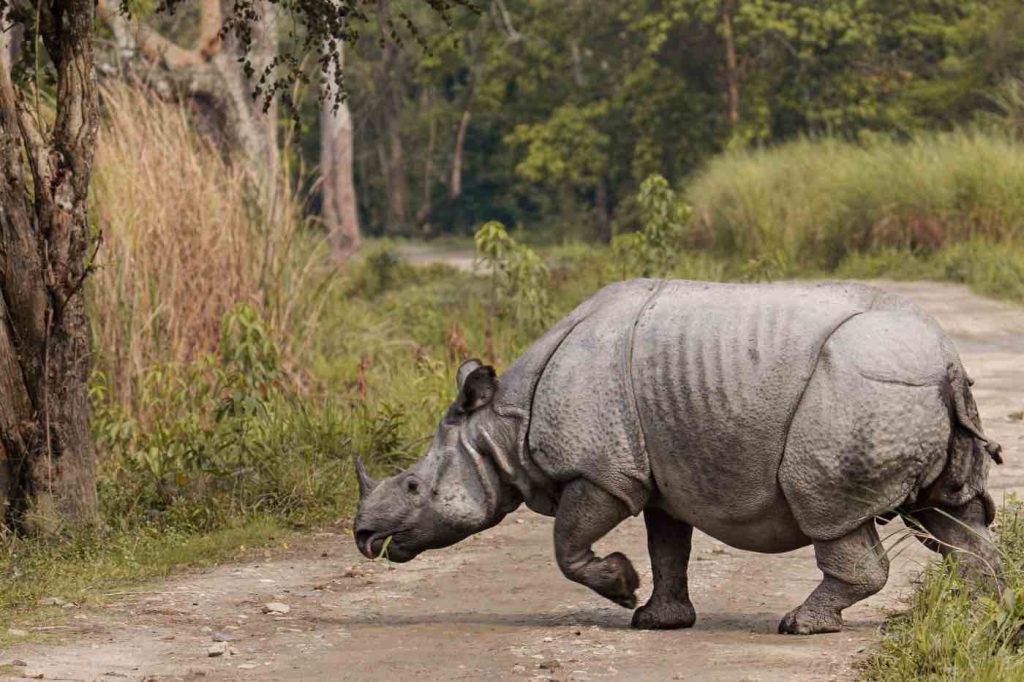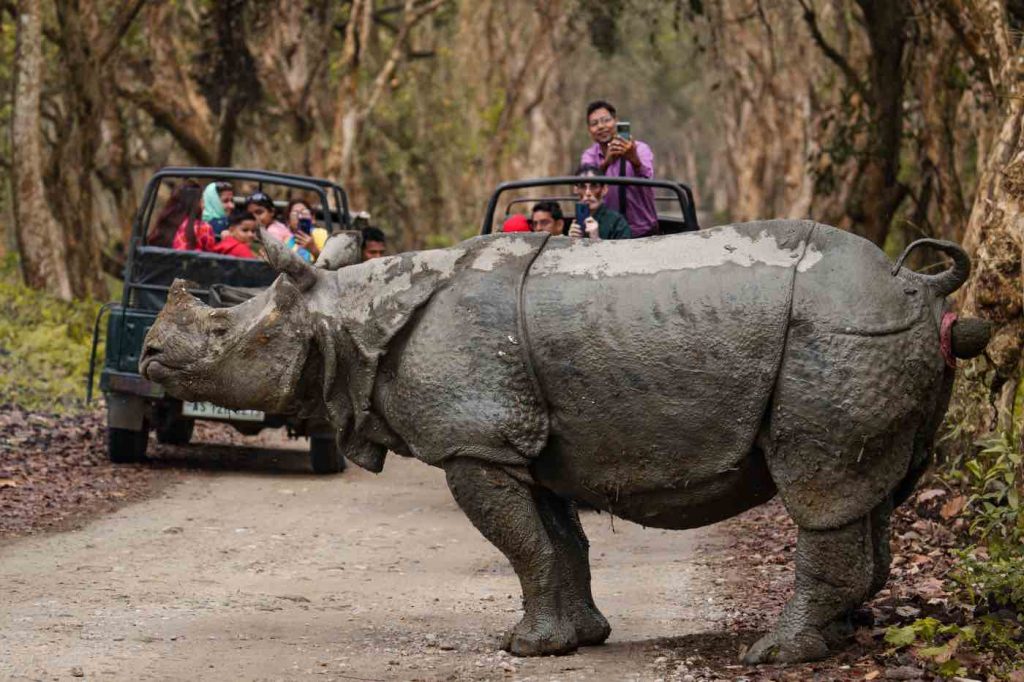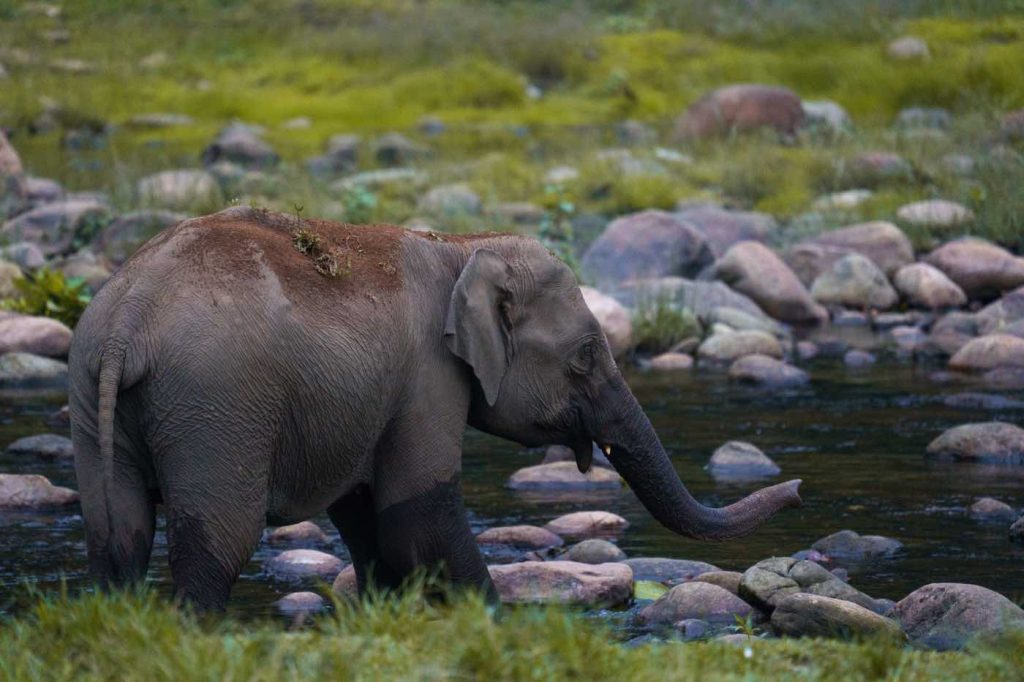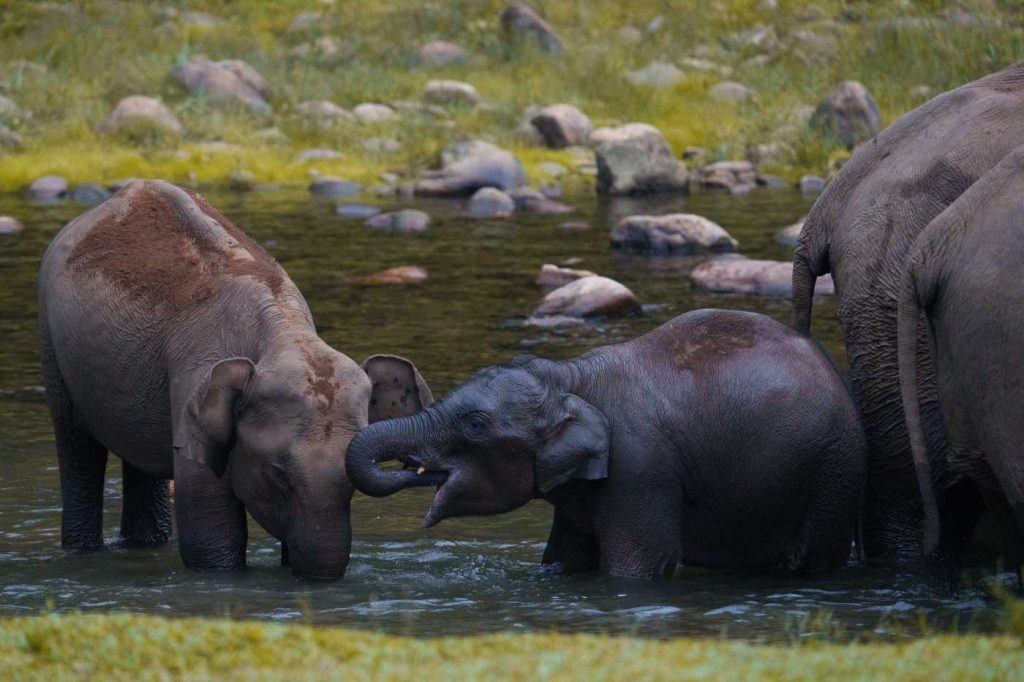Vertebrates are a diverse group of animals characterized by possessing a backbone, exhibiting a wide range of adaptations, and inhabiting various habitats, playing crucial roles in ecosystems worldwide.
Vertebrates form an incredibly diverse and captivating group of animals, defined by their backbone or vertebral column that supports their bodies.This group encompasses a wide range of animals, including mammals, birds, reptiles, amphibians, and fish, each displaying unique adaptations that have allowed them to flourish in various habitats worldwide. With their remarkable success and adaptability, vertebrates have become one of the most prevalent and successful animal groups on Earth.

Vigilant: The rhino keeps a watchful eye.
At the core of vertebrates’ distinguishing features is their possession of a backbone, which provides both structural support and protection for the delicate spinal cord. This skeletal framework grants them increased mobility, strength, and coordination, setting them apart from their invertebrate counterparts. Many vertebrates organize their bodies into distinct regions—head, trunk, and tail—and exhibit bilateral symmetry with defined front and back ends. This structural design allows for a diverse array of sizes, from diminutive hummingbirds to majestic whales, enabling vertebrates to thrive in nearly every habitat, be it terrestrial, aquatic, or aerial.

Guardian: A single-horn rhino protects its territory.
Advanced Anatomy of Vertebrates
Vertebrates are renowned for their complexity and the diversity of their physiological systems. Their well-developed nervous systems, consisting of a brain and spinal cord, coordinate sensory perception, motor functions, and behaviour. Vertebrates can also perceive and interact with their surroundings thanks to their eyes, hearing, and noses. Many vertebrates have evolved advanced respiratory systems, including lungs or gills, to facilitate efficient gas exchange. Furthermore, they exhibit specialised adaptations for locomotion, such as wings for flight or limbs for terrestrial movement or swimming.

Endearing Expressions: Innocent eyes reveal the soul of a young elephant.
The group of vertebrates encompasses several major classes, each characterised by unique characteristics and adaptations. For instance, mammals maintain a warm-blooded body, grow hair or fur, and nurse their young with milk. Birds, with their feathers and remarkable ability to fly, lay eggs and dominate the skies.

Protective: A mother shielding her calf.
Life Across Water and Land
Reptiles, distinguished by their scales, amniotic eggs, and diverse species like snakes, lizards, and turtles, have adapted to diverse environments. Amphibians, with their moist skin, undergo metamorphosis and are capable of living in both aquatic and terrestrial realms. Finally, fish, the oldest vertebrates, live in water and breathe through gills. They have many forms and behaviors.
Copyrights:
All the photos and text in this post are copyright of Aswin K, Kozhikode, Kerala, Creative Hut Institute of Photography and Film. Their reproduction, full or part, is forbidden without the explicit approval of the rightful owners.


